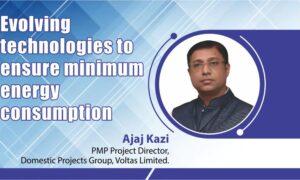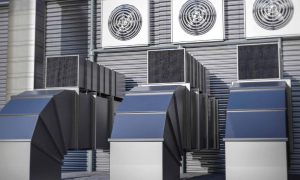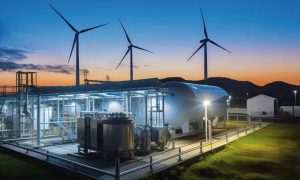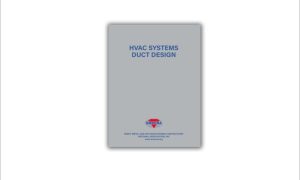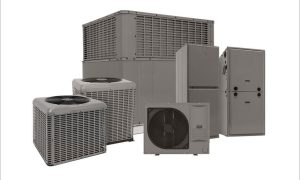We all should try and collaborate and see how we can serve the country depending upon the kind of infrastructure.
While deliberating about the last mile I would like to give a certain perspective that we have built over the last few years. So one of the things that I wanted to highlight and I wanted to reiterate was that about the cold chain we have spoken a lot about reducing wastage, and I think it is a very important factor.
Cold chain and brand value
But a key thing about cold chain is not just about reducing wastage, but it is actually for a brand fulfilling that promise, right.
If you are buying a certain yoghurt, or if you are buying a certain chocolate, you want it to be given to you in a certain form and shape right. And that is what the brand is trying to achieve, and for that they need a cold chain. If you want your customer to experience your product in the way that you have designed it and you wanted it that is what a cold chain is doing for you.
So while traditionally cold, the chain has been very, very focused on impacting wastage, storing produce for a longer period of time, price arbitrage, all of these have been factors through which the cold chain business has worked. I think now we are seeing a lot more of the flow of a cold chain where commodities are not stored for a long time, but they are stored for an optimum time in order to fulfil demand. And that’s where the last mile cold chain comes into view. Also from a business model standpoint, you are not looking at only a cost reduction or a wasted elimination as your source of. So, creating value out of the cold chain in some way, increasing the price, increasing your revenue and increasing your reach as a way of monetising the cold chain assets that are put in the field. So I think these are two things which are in some ways dependent, but I think we talk a lot more about wastage and little less about how other monetisation methods can be built for cold chains.
Last mile connectivity
And that’s what I would like to highlight in the last mile talk. So when we talk about last mile, it is typically the distributor to retailer and retailer to home kind of movement. So this is what I am restricting myself to. And what we have seen is that most of the products when they move from the origin point along this line, their quantities are much smaller. They are also multi-temperature in nature, given the retail infrastructure in India.
If you take general trade, for example, general trade is 85 percent of our overall trade and there the quantities that have to be delivered at every shop are very small.
Reefer truck as cold chain solution
So the traditional cold chain solution is the reefer truck. And you know the refrigerated containers that are put on smaller trucks as well are not as viable because the capacity utilisations may or may not make sense. Because of small quantities, frequent deliveries, even the temperatures get impacted. On the other end of the spectrum you have got the ice boxes with gel packs. You have also got the dry ice, so there again with the current set of solutions there is a question on the reliability of the solutions. In winters they will work and some of them do not work during peak summers. So, you will have spoilage and rejections, and dry ice is not as sustainable and as easy to use. The pricing is highly fluctuating in Mumbai, You will have at one price and Kolkata you will have another. Different prices, so it’s an area which requires a certain intervention which can standardise the way in which the last mile movement happens, and this may be very specific to the kind of retail infrastructure we have in India and very different from what we have in the West. So what is that we are proposing?
Are the goals viable, reliable, and sustainable so it should make sense to deploy it based on the price of the product? Reliably, it should work all the time, independent of the season and sustainable. It should not have an adverse impact on the environment and preferably not using fossil fuel. So in this I think one of the one of the key thought processes that went through our mind when we were looking at this as a solution is that when we are trying to save a commodity or preserve a commodity, you need to maintain the temperature of the product and not really the temperature of the area around the product.
Cooling the space
All our cold chains have been designed to cool spaces and cooling spaces does not always mean that you cool the product. And it is not always required to cool the space in order to cool the product. So for example, when we feel cold in winter we wear a jacket. We do not always need the whole room to be heated. We can wear a jacket and feel comfortable about it. So, we are trying to save ourselves, but we are not trying to cool the whole or heat the whole area, which is what we are trying to do with these kinds of solutions. Because here you need to be able to reliably and viably move even a small Piece of butter, so a simple simplification of how it works is you have got something called phase change material, which is a liquid which freezes and melts at different temperatures depending upon the temperature of your product. You can freeze that phase change material. We can keep it along with the product and then you can move it in the ambient depending upon what your requirement is. Your requirement could be anywhere from an hour movement to maybe whatever three days or four days kind of movement. So depending upon your requirement the solution can be tailored.
Now how is it different from a regular gel pack? And a box is that using these specific engineered chemicals you are able to get a much, much more precise approach. A temperature profile in the box of all the products compared to what you used to get to the gel pack, which is essentially freezing and melting water. So depending upon the product you can choose the right set of solutions which will give you a reliable band of temperature for the period of time that you need. So how is it becoming viable?
I just walk you through the steps. We say that there is a reduction in the cost of ownership. How is it reducing the cost of ownership because here you do not need a dedicated fleet? You can catch hold of a Porter. You can catch hold of any kind of an ambient rental vehicle which is available at the same cost in the summer and the winter, which may be different for a refrigerated truck. And so your costs remain standard and there is no issue of a vehicle breakdown because you’re not dependent on that particular vehicle.
The fact that there is no such thing as this whole setup if you look at a part load level, let’s say moving around 400 kg of material in these boxes versus moving it in the reefer, there is a significant reduction in the initial costs. Payload of course is variable, and since there is no dedicated fleet, you can if it’s a smaller payload, you can move it on a bike or a three wheeler or a four Wheeler, depending upon what.
The other requirement is no maintenance cost because there’s nothing that breaks and there is 0 diesel cost, so there is absolutely no fossil fuel which is required in making this kind of cold chain movement at the same time. As I said, the technology ensures that the temperature is close to the range which you need, so if you need a – 18 – 20 you will get a -18 – 20. It is not that you are compromising on the quality. There is redundancy because if the vehicle fails, you can get another vehicle with multiple drops. Each of these boxes gets opened only once or twice so you do not lose temperature. There is much higher reliability if you have a larger number of drops. These are a few examples of how this actually practically works.
Way ahead
And finally, I just wanted to give you a sense of how this has changed for us because we are talking about the next year and how the next year or next five years are going to look. We have done a very specific market study on what is the potential for distribution of cold chains, and these only talk about the chain and for the equipment itself. It is almost a $1.5 billion opportunity and this is over the next five years. And this is growing at a very, very fast rate, so this is something that we all should look at. We all should try and collaborate and see how we can serve the country depending upon the kind of infrastructure built in the country.
Cookie Consent
We use cookies to personalize your experience. By continuing to visit this website you agree to our Terms & Conditions, Privacy Policy and Cookie Policy.



